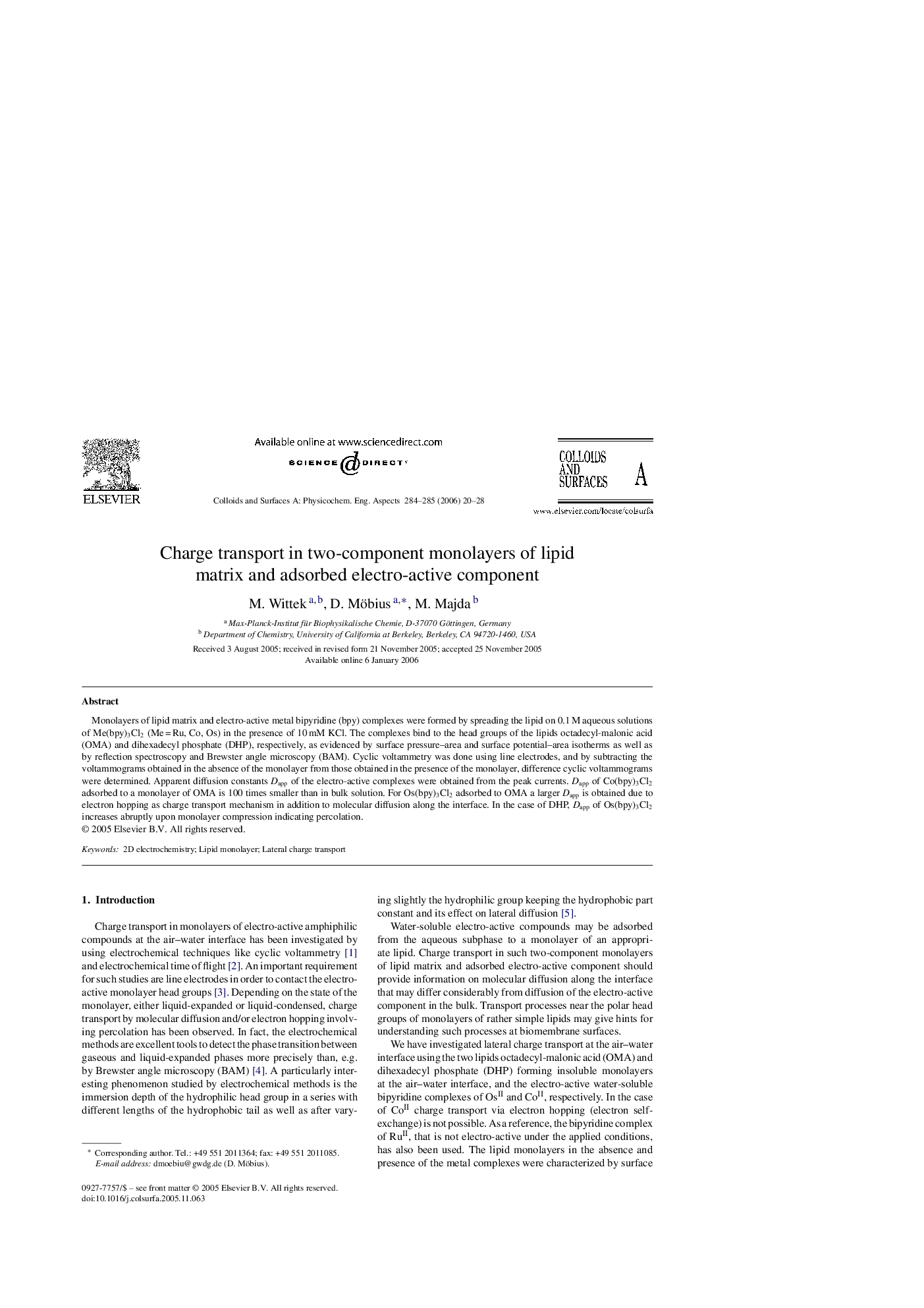| Article ID | Journal | Published Year | Pages | File Type |
|---|---|---|---|---|
| 598209 | Colloids and Surfaces A: Physicochemical and Engineering Aspects | 2006 | 9 Pages |
Abstract
Monolayers of lipid matrix and electro-active metal bipyridine (bpy) complexes were formed by spreading the lipid on 0.1 M aqueous solutions of Me(bpy)3Cl2 (Me = Ru, Co, Os) in the presence of 10 mM KCl. The complexes bind to the head groups of the lipids octadecyl-malonic acid (OMA) and dihexadecyl phosphate (DHP), respectively, as evidenced by surface pressure-area and surface potential-area isotherms as well as by reflection spectroscopy and Brewster angle microscopy (BAM). Cyclic voltammetry was done using line electrodes, and by subtracting the voltammograms obtained in the absence of the monolayer from those obtained in the presence of the monolayer, difference cyclic voltammograms were determined. Apparent diffusion constants Dapp of the electro-active complexes were obtained from the peak currents. Dapp of Co(bpy)3Cl2 adsorbed to a monolayer of OMA is 100 times smaller than in bulk solution. For Os(bpy)3Cl2 adsorbed to OMA a larger Dapp is obtained due to electron hopping as charge transport mechanism in addition to molecular diffusion along the interface. In the case of DHP, Dapp of Os(bpy)3Cl2 increases abruptly upon monolayer compression indicating percolation.
Keywords
Related Topics
Physical Sciences and Engineering
Chemical Engineering
Colloid and Surface Chemistry
Authors
M. Wittek, D. Möbius, M. Majda,
